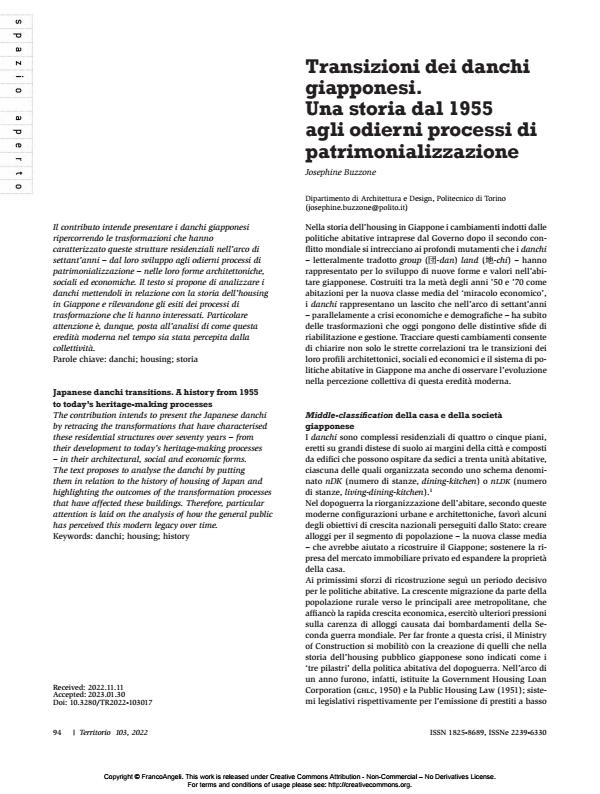Japanese danchi transitions. A history from 1955 to today’s heritage-making processes
Journal title TERRITORIO
Author/s Josephine Buzzone
Publishing Year 2023 Issue 2022/103
Language Italian Pages 10 P. 94-103 File size 855 KB
DOI 10.3280/TR2023-103017
DOI is like a bar code for intellectual property: to have more infomation
click here
Below, you can see the article first page
If you want to buy this article in PDF format, you can do it, following the instructions to buy download credits

FrancoAngeli is member of Publishers International Linking Association, Inc (PILA), a not-for-profit association which run the CrossRef service enabling links to and from online scholarly content.
The contribution intends to present the Japanese danchi by retracing the transformations that have characterised these residential structures over seventy years – from their development to today’s heritage-making processes – in their architectural, social and economic forms. The text proposes to analyse the danchi by putting them in relation to the history of housing of Japan and highlighting the outcomes of the transformation processes that have affected these buildings. Therefore, particular attention is laid on the analysis of how the general public has perceived this modern legacy over time.
Keywords: danchi; housing; history
Josephine Buzzone, Transizioni dei danchi giapponesi. Una storia dal 1955 agli odierni processi di patrimonializzazione in "TERRITORIO" 103/2022, pp 94-103, DOI: 10.3280/TR2023-103017